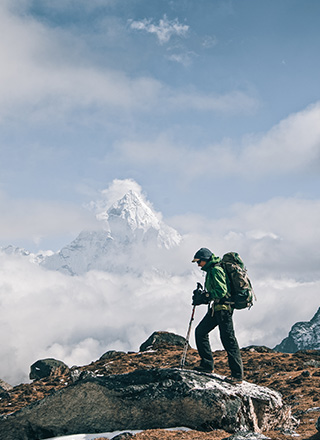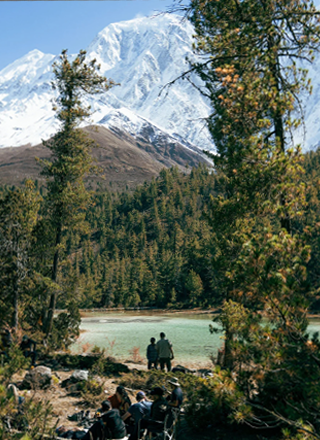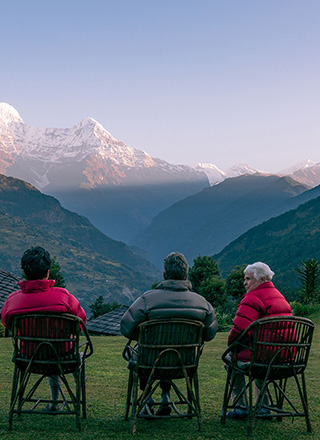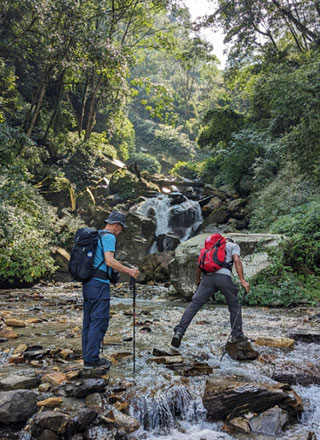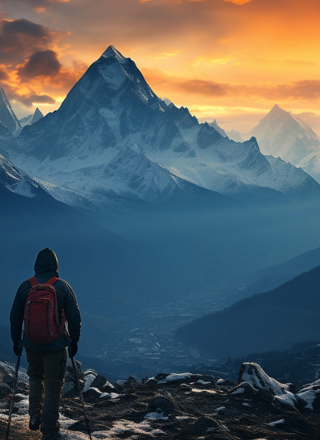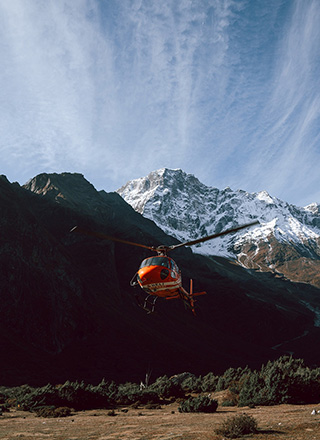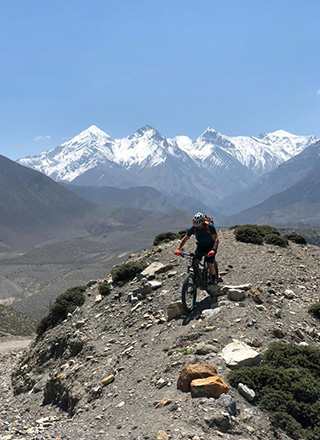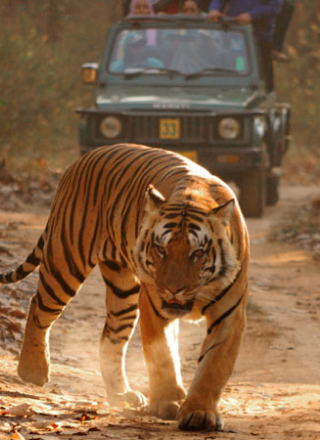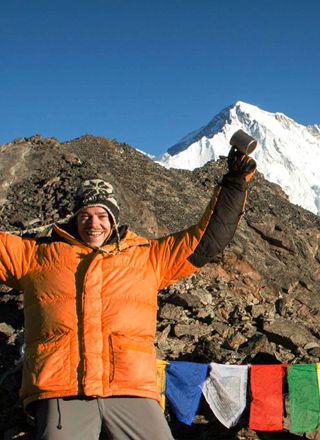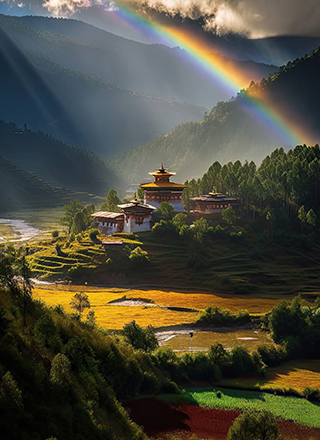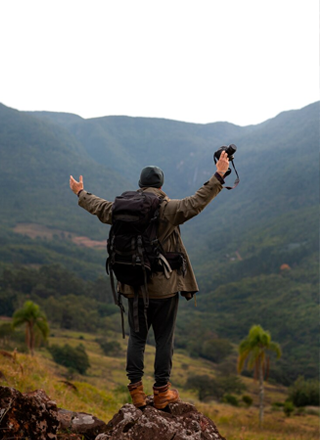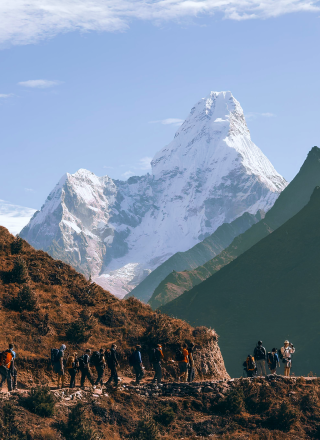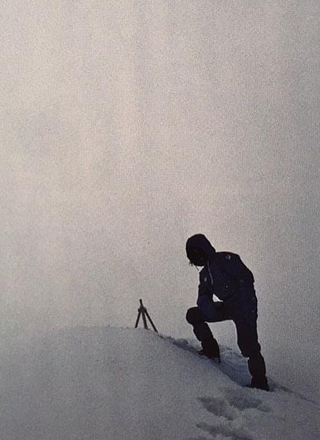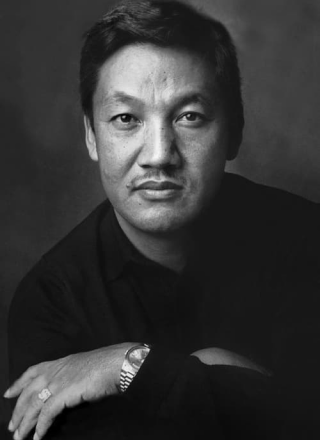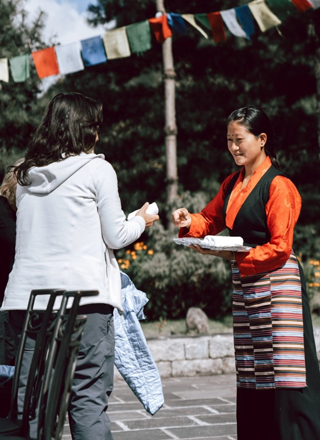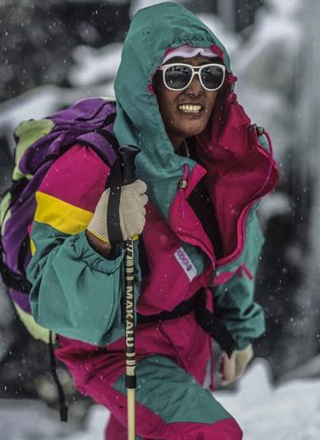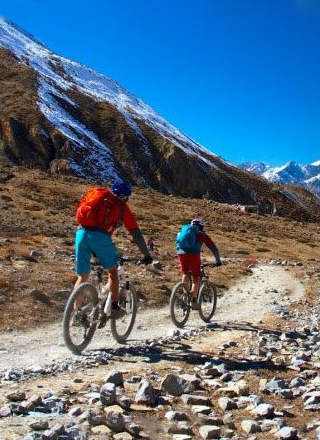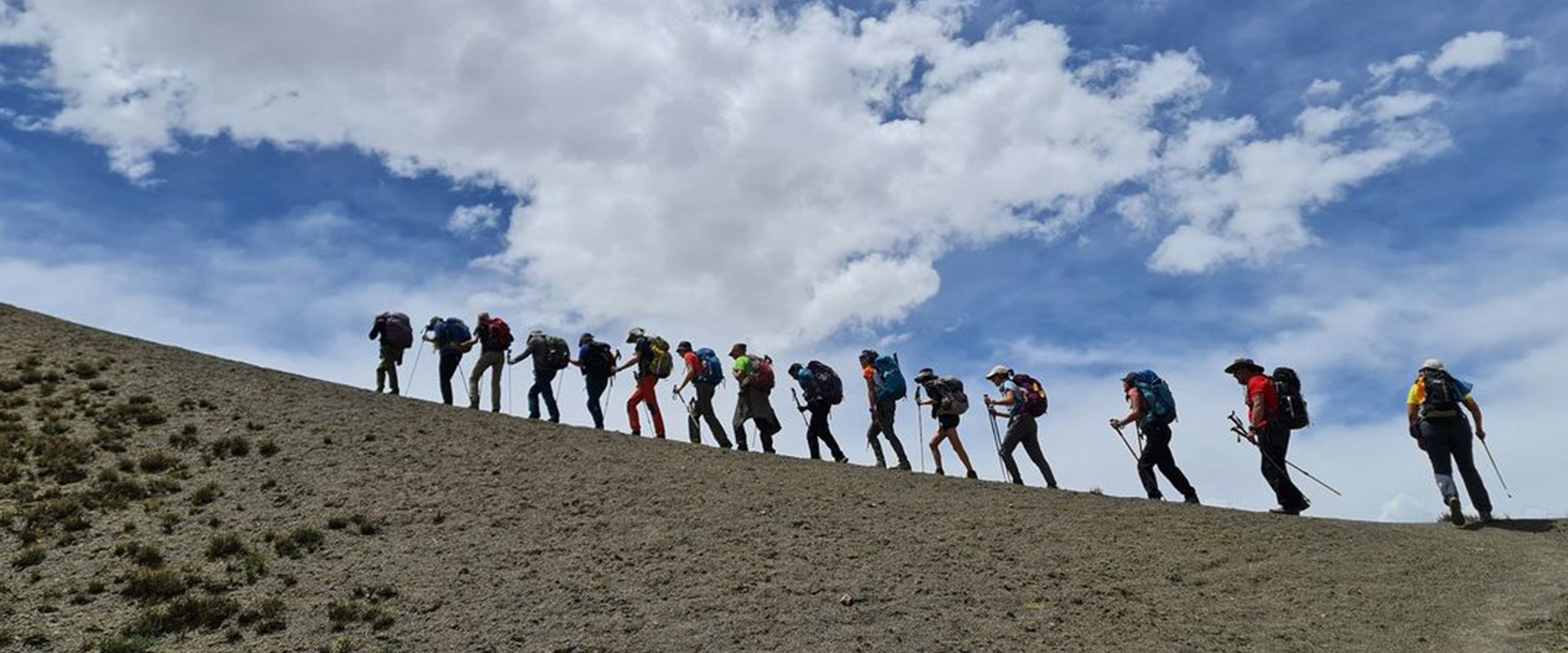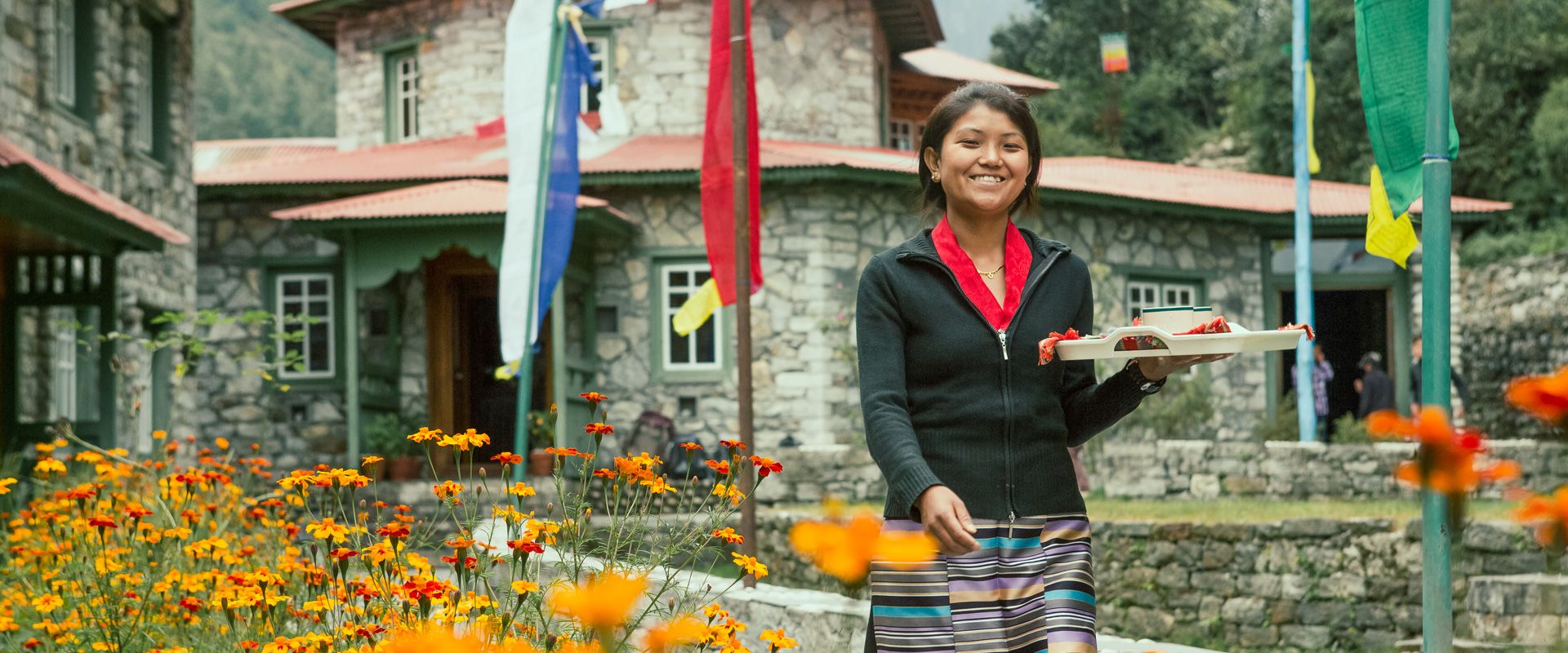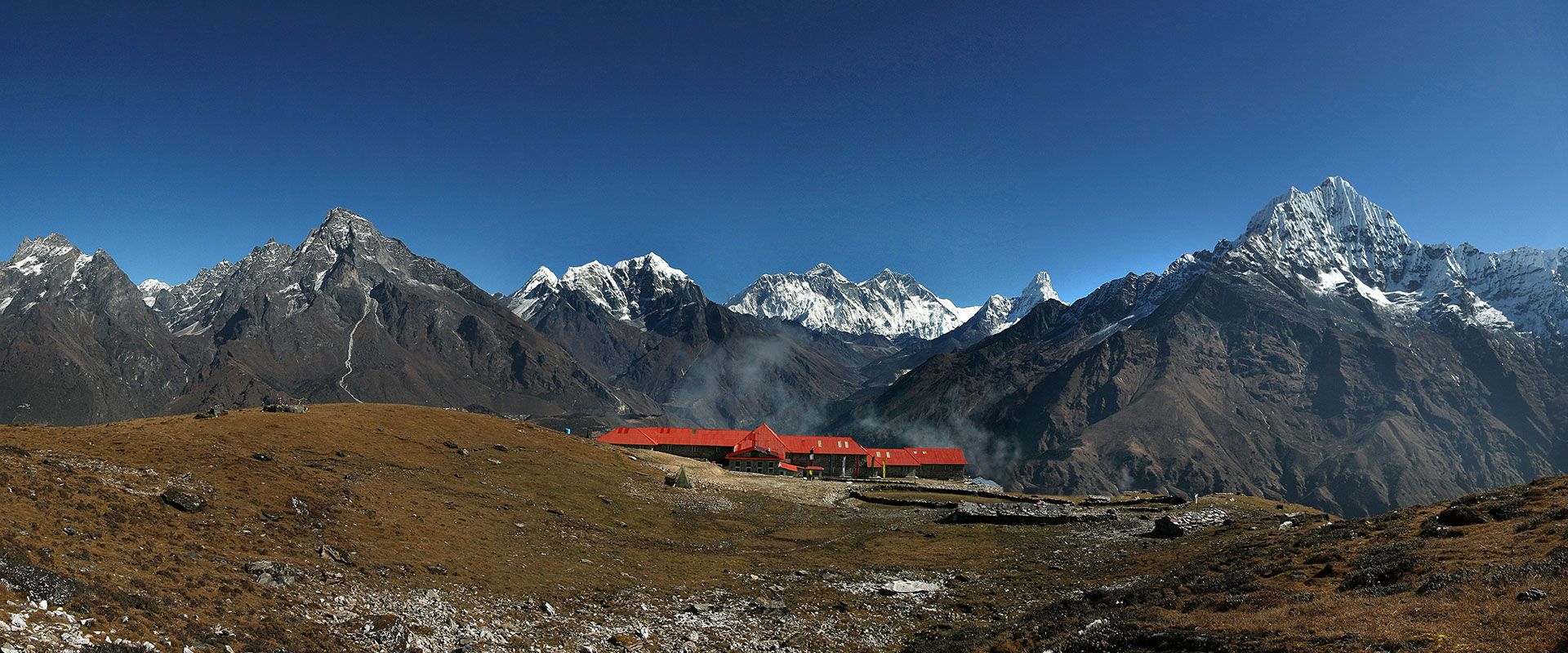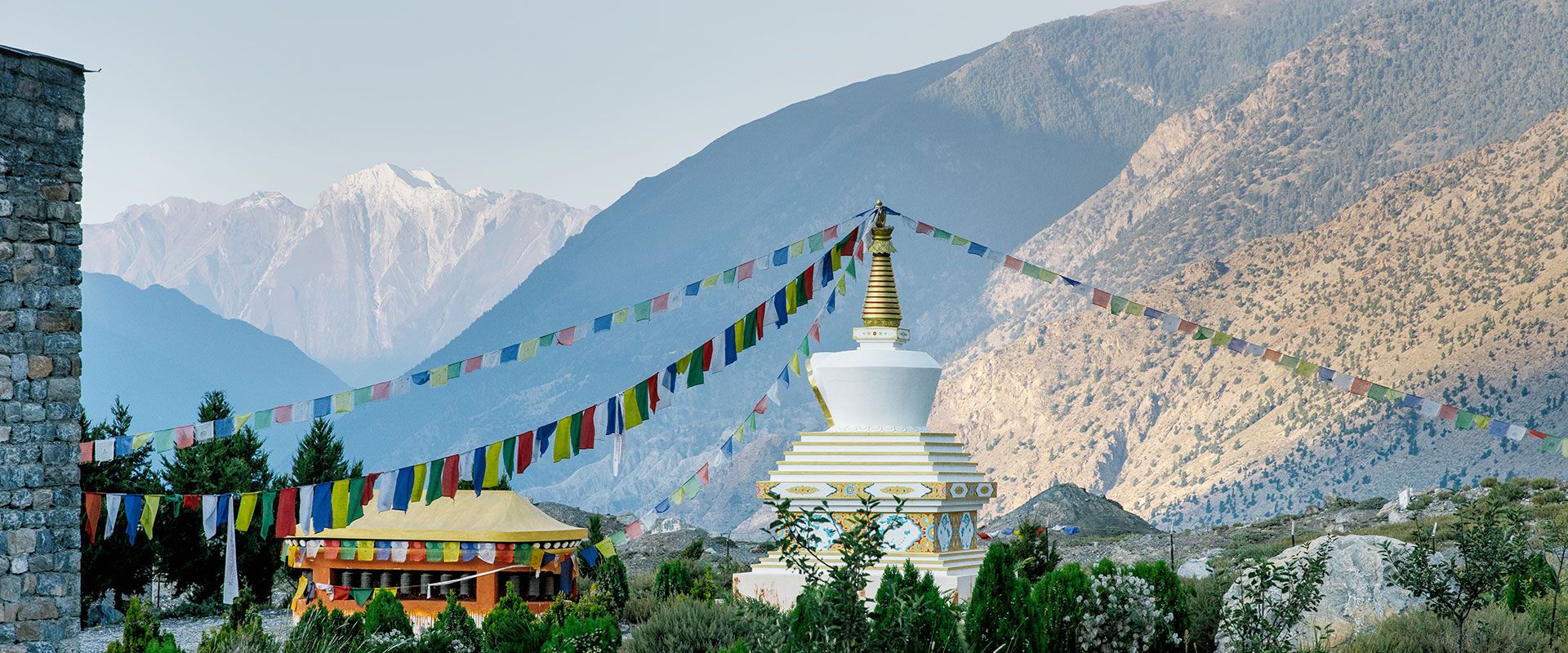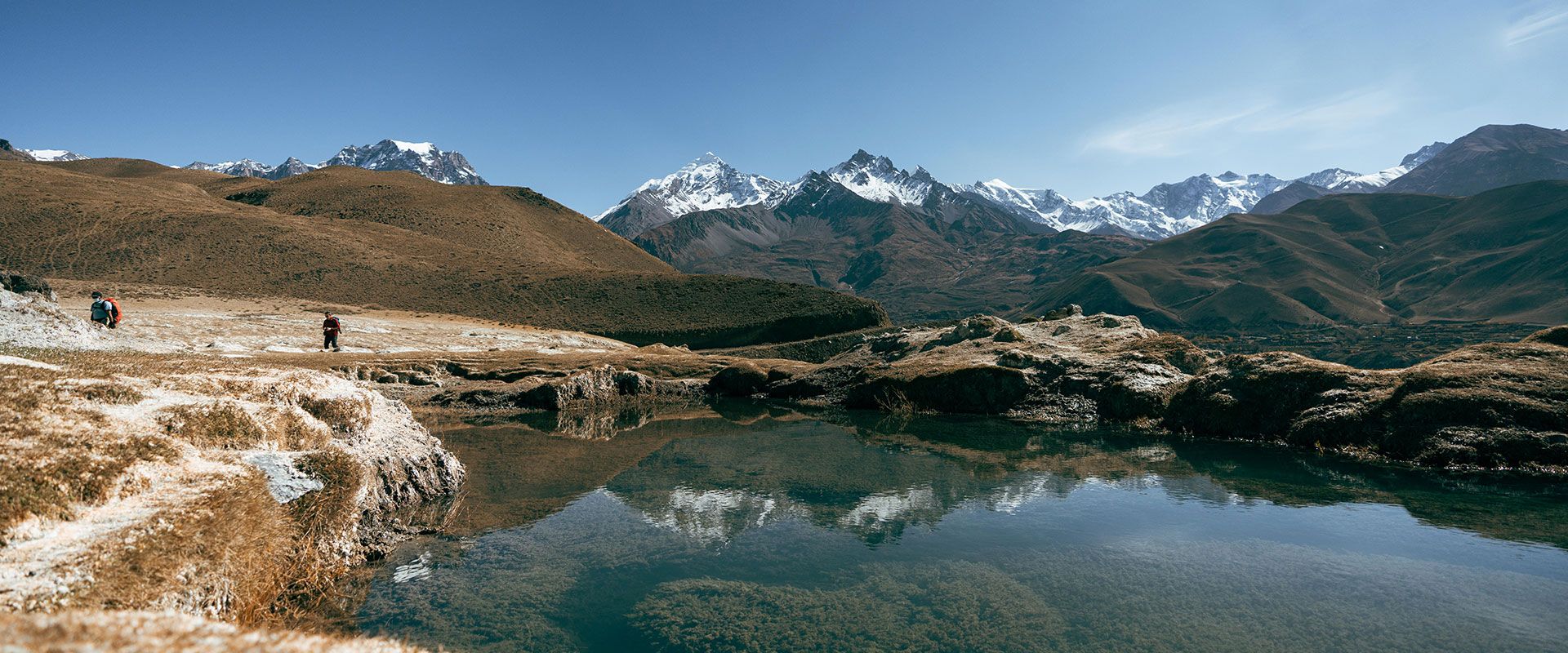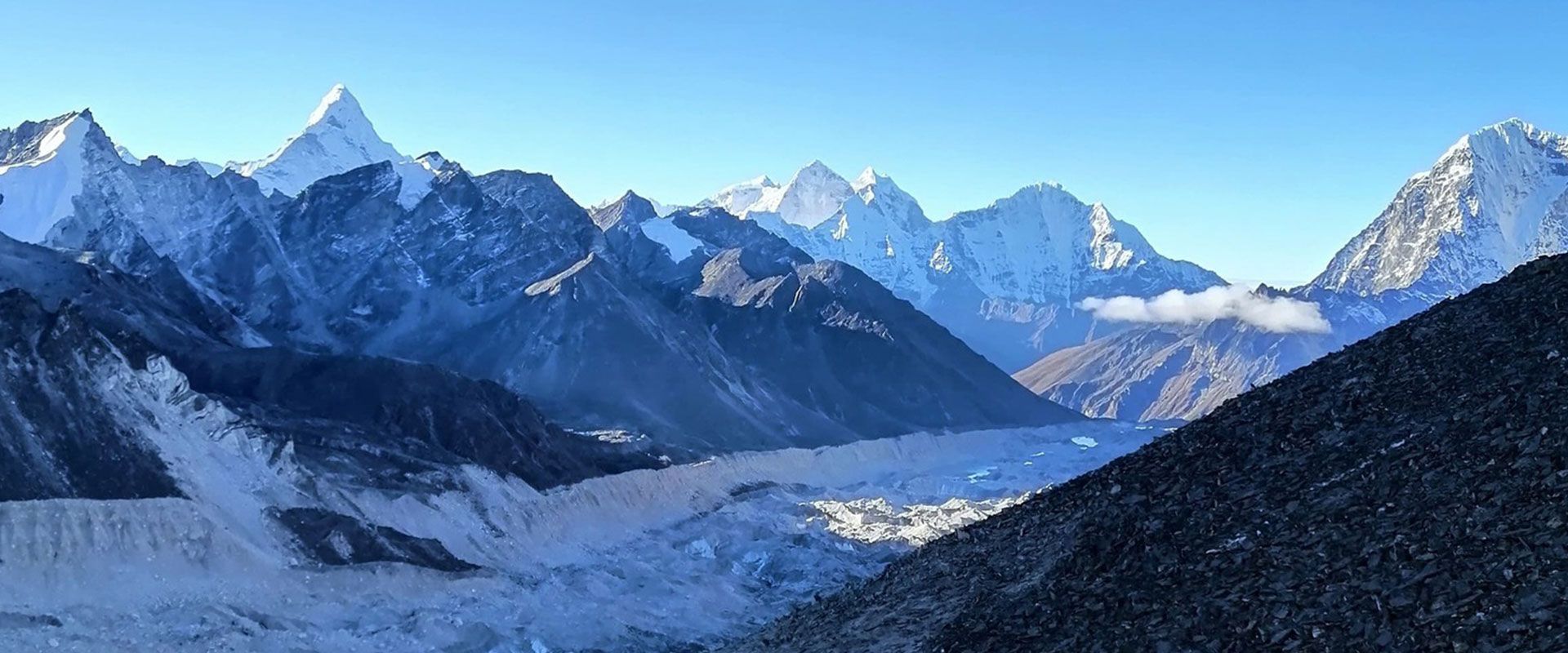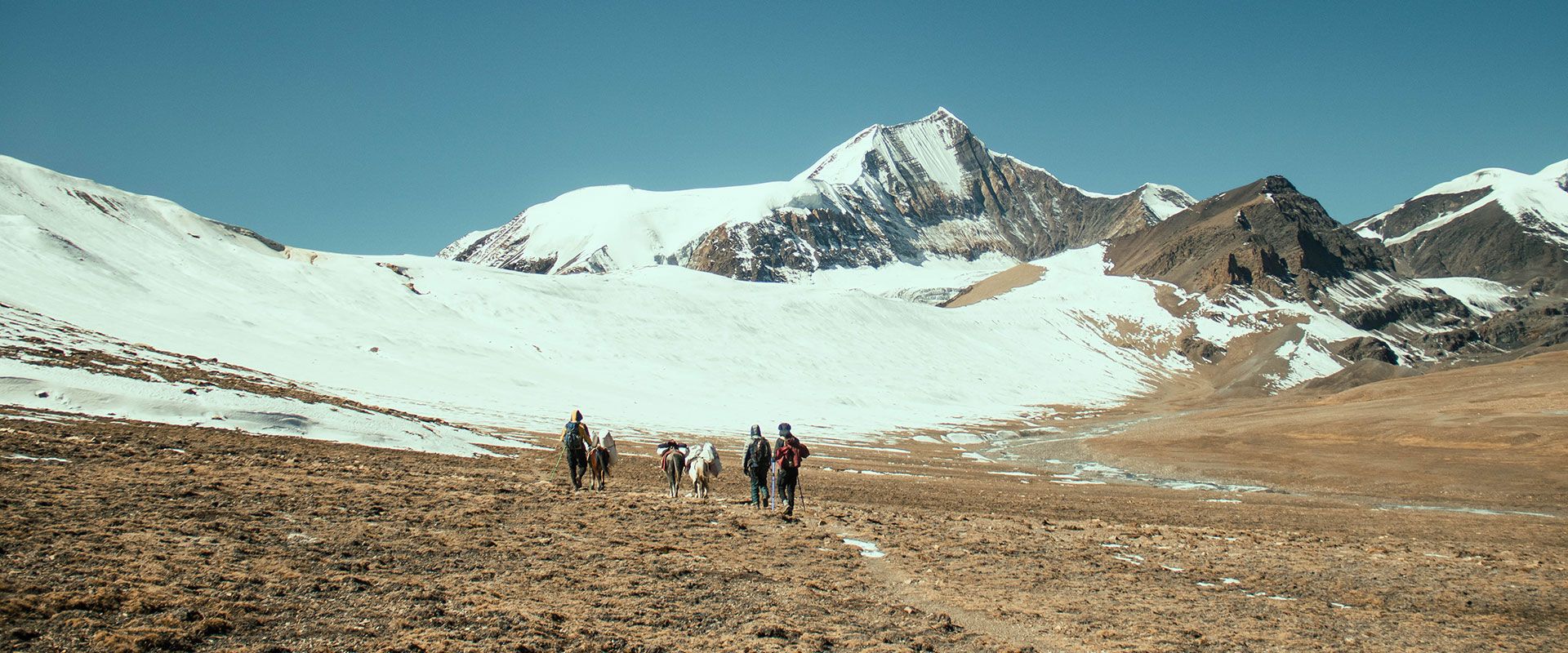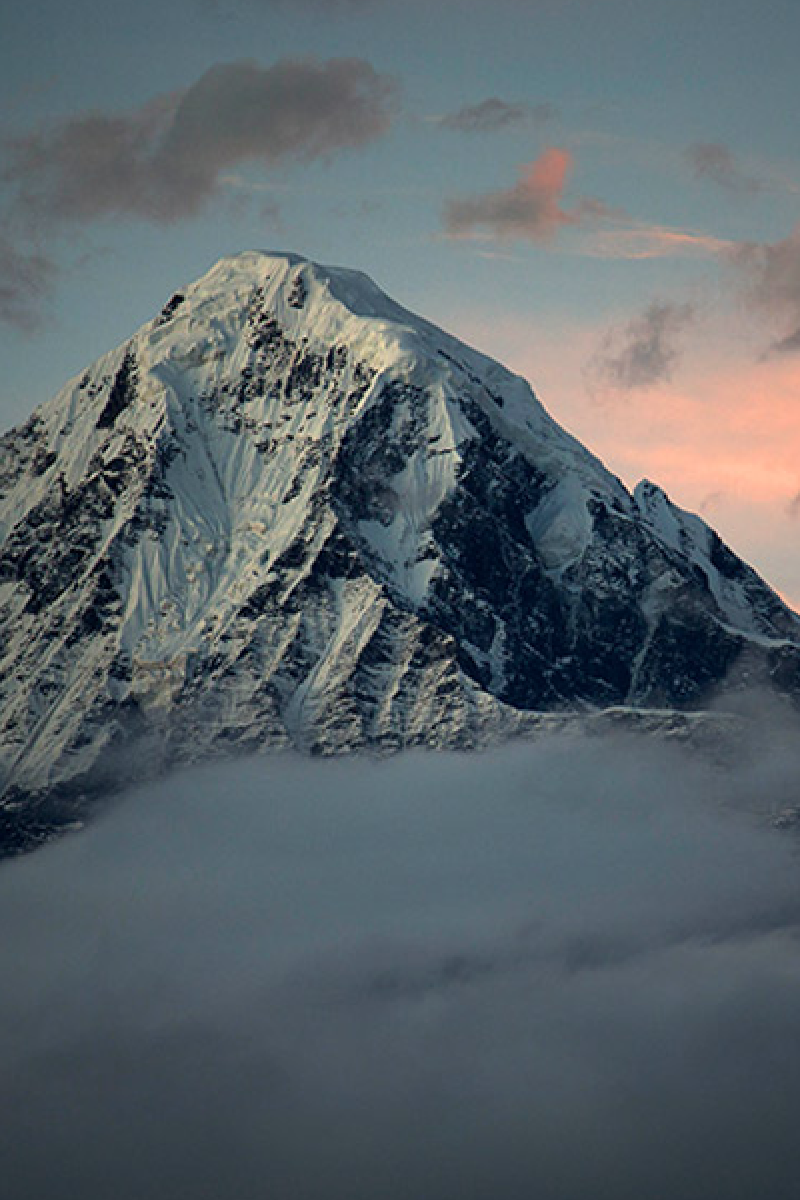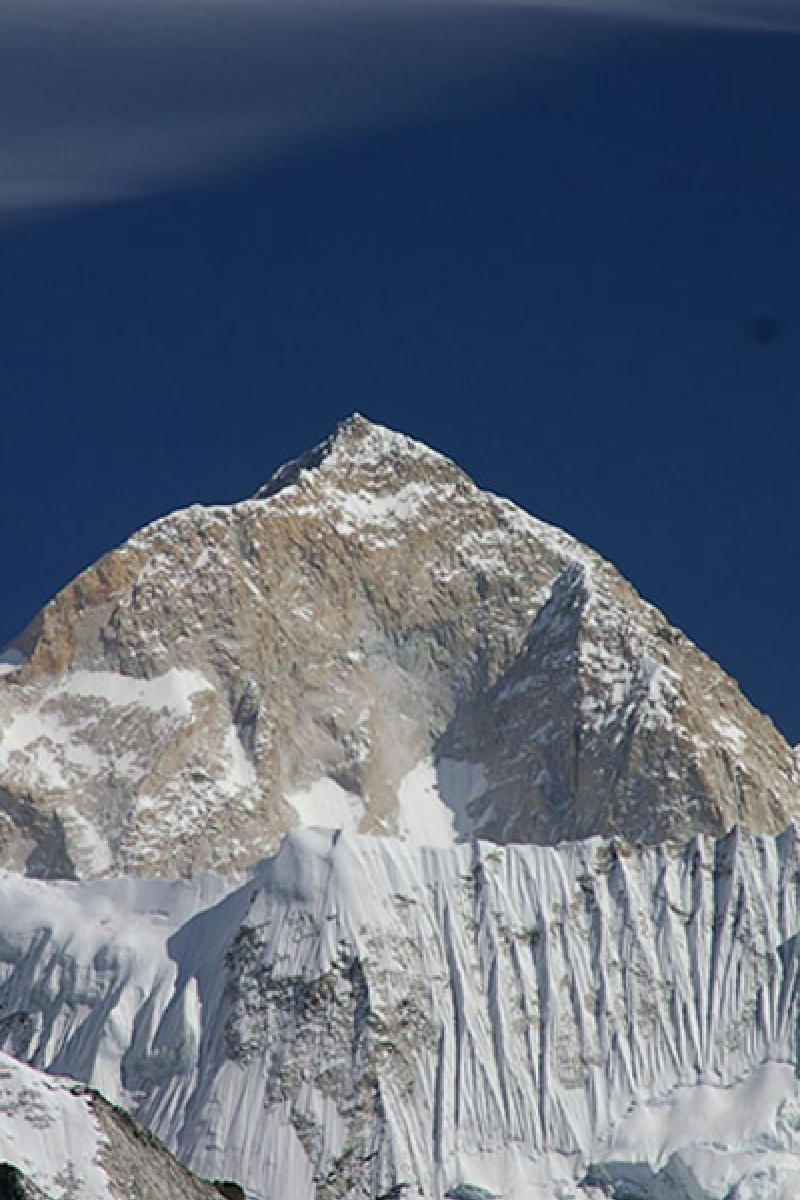- Travel Styles
- Destinations
- Signature & Charity Treks
- Special Project
- About Us
- Contact Us
10 days
9 Nights
Dona Lake Trek
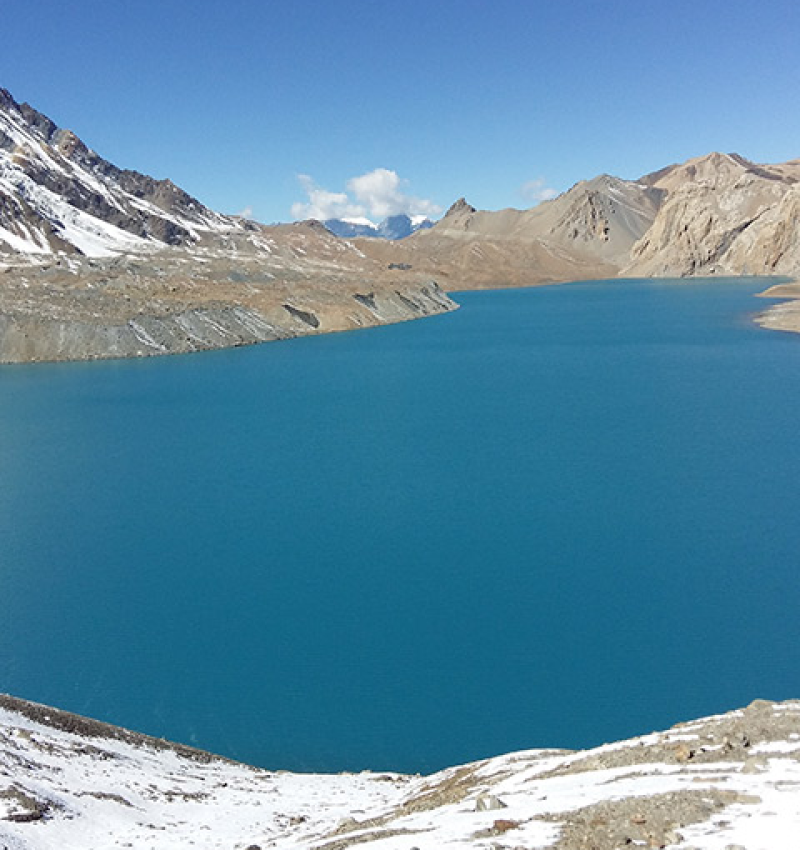
OVERVIEW
Discover the Dona Lake Trek: A Scenic and Cultural Adventure in Nepal’s Annapurna Region
The Dona Lake Trek, situated at an elevation of 4,250 meters in Nepal’s lower Annapurna region, offers stunning views of mountains like Mt. Manaslu, Annapurna II, and Lamjung Himal, along with rich cultural experiences involving diverse local communities. Trekking is not recommended during the winter due to icy trails, or during the monsoon season from mid-June to mid-September, when cloud cover can obscure the views.
Trip Overview
Destination
Region:
Activity:
Max. Altitude:
Type:
Group size:
Difficulty:
Highlights
- Panoramic views of Mt. Manaslu, Annapurna II, Lamjung Himal, and other peaks in the Annapurna range.
- Encounters with diverse local communities such as Brahmins, Chhetri, Thakali, Magar, Tamang, and Tibetans, offering a glimpse into their traditional lifestyles.
- Trekking through beautiful valleys, forests, and high mountain landscapes, especially vibrant in April with blooming Rhododendrons.
ITINERARY
TAILORED TRIP FOR YOU
Arrival in Kathmandu
Depending on your arrival time, our representative will be at the airport to receive you and transfer you to your booked hotel.
Overnight in Hotel
Meals: B
Drive to Chyamje – 10 Hrs Drive
Highlights of the day:
– Chyamje Waterfall
– Beautiful Gurung Village Tal
– Chahare Khola waterfall at Tal
An early morning breakfast and we drive to Besisahar. We drive early to avoid the through the paved road from Kathmandu until Besisahar. We stop over for a lunch at Besisahar where we change our vehicle and use the Jeep from here until Tal as the roads are off route. We stop over shortly at the checkpoint in Khudigoan. Crossing several iron bridges and a tunnel made by Chinese government building a 50MW hydropower.
We arrive at Chyamje where will stop enjoy the waterfall and spend our overnight here.
Overnight in Lodge
Meals: BLD
Trek to Nache via Tal – 4/5 Hrs Trek
The trail today continues countering the hill after crossing the small bridge all the while getting glimpse of jeep passing on the other end across the MarshyangdiRiver. We continue the beautiful walk to arrive at Tal which is a beautiful village situated at the bank of Marshyangdi River and have our lunch here. The Gurung village with around 300 people has comfortable lodges where we spend the overnight after the long drive from Kathmandu.
After lunch, we start our walk through the village and continue by the side of the Marshyangdi River flowing through the valley. 2 hrs. of walking brings us to Khotro (2200m) from where we start uphill towards Nache (2200m) for around 2.5 hrs. Nache is a village situated on a top of hill with around only 40 households and few homestay. We have our lunch here in Nache and continue our trek with a short descend to a long suspension bridge of 130m long.
Overnight in Lodge
Meals: BLD
Trek to Kromtong (2975m) – 6 Hrs Trek
With our early morning view of Annapurna and Manasalu we descend towards Alubari after breakfast through the small trails that are made by the local shepherds and villagers who commute through these paths. Passing through the massive pine trees we arrive at Alubari where we have our lunch. We continue trekking towards Kromtong through the pine forest and spend our overnight here.
Overnight in Camp
Meals: BLD
Trek to Dharmasala (3665m) – 7/8 Hrs Trek
We continue trekking towards Dharmasala today following the trail following the Dona Khola. Dona Khola follows through the two steep cliffs as we continue up to Dharmasala. We encounter various wildlife such as Himalayan Langur, Ghoral, Thar and Himalaya Griffon as we continue trekking up to Dharmasala, a beautiful village at the pasturelands of the Dona valley. Mt. Manasalu stays without throughout the day.
Overnight in Camp
Meals: BLD
Trek to Dona Lake (4250m)and Back to Kromtong– 5/6 Hrs Trek
A short walk today brings us to Dona Lake through the rhododendron forest. The forest is enveloped with amazing rhododendrons flowers of at least 10 colors. The highlight of the trek is the glacial lake Dona at the altitude of 4250m with added views of Mt. Manasalu and large caves around the region.
We return back to Kromtong retracing the steps that we took as we ascended up to Dona.
Overnight in Camp
Meals: BLD
Trek to Tal via Nache – 5/6 Hrs Trek
We return back today to Tal retracing our steps back to Namche where we spent overnight. We will have our lunch at Nache and continue our trek to Tal via Khotro and spend our last night of trek at the small Gurung village.
Overnight in Lodge
Meals: BLD
Drive to Kathmandu via Besisahar – 10 Hrs Drive
Our private jeep will be ready for us after the breakfast for a long bumpy ride to Besisahar. As we drive to Besisahar, we will pass through the route which once was one once a popular trekking route. We will encounter some tourist walking up to trek the Manasalu region.
We will pass through small villages of Timang, Danakyu, Bagarchap, Jagat, Bahundada, Tal and Chyamje where we will have our lunch and continue driving to Besisahar where we stop for the overnight after a long bumpy ride.
We will leave the Jeep at Besisahar and hop into our bus as the road from Besisahar to Kathmandu is well black topped. The comfortable drive to Kathmandu takes around 5 to 6 hrs. depending on the traffic.
Overnight in Hotel
Meals: B
Free Day in Kathmandu
A free day in Kathmandu can be used for shopping in Kathmandu or just relax in the hotel. An optional sightseeing to the popular sites can be provided upon request. In the evening we will drive to Le Sherpa – a fine dining restaurant for 3 course dinner.
Overnight in Hotel
Meals: BD
International Departure
Depending on your flight time you will be transferred to the airport. The airport checks in is 3 hours prior to the departure time and the hotel checkout time is 12 P.M. In case our flight is late evening please let us know if you require half day use of the hotel.
Our representative will meet you at the hotel and transfer you to the airport.
Meals: B
Included
- 3 nights Gokarna Forest Resort on Full Board(Breakfast, Lunch & Dinner)
- 7 nights Ker & Donwey as per program on Full Board
- 1 night Temple Tree Resort on Full Board
- Flight: KTM- PKR(Regular Flight) with airport taxes
- ACAP & TIMS Permit Fee
- 1 English Speaking guide
- Trek Staffs insurance & daily wages.
- All airport transfers
- Transfer: Pokhara airport to Nayapool, Phedi – Pokhara hotel, Pokhara hotel-Bandipur, Bandipur- Kathmandu hotel
Not Included
- Personal Equipment & Insurance
- Personal Expenses (hot & cold beverages, laundry, telephone and other personal expenses)
- Nepal Visa fee US$ 40 per person
- Emergency Evacuation if required
- Tips for Staffs
- Other personal Expenses
ACCOMMODATIONS
WHERE YOU WILL STAY
FAQs
ESSENTIAL INFO
adventure that speaks to your heart.
Most nationalities require a visa for Nepal, which can be obtained in advance or on entry. If you wish to apply before departure the current visa cost is £20 for a 15 day visa and £35 for a 30 day visa for UK passport holders. The current cost of a visa on arrival is US $25 for 15 days, US $40 for 30 days or if extending your stay $100 for 90 days. All are multiple entry. The visa on arrival fee can be paid for in cash in US Dollars, Pounds Sterling or Euros. You will also need a passport photo. Application forms are available in the immigration hall (or for electronic passports there are visa registration machines which, after inserting your passport, automatically fill out a form for you). You must firstly join the queue to pay the visa fee, and then go to the relevant immigration desk to obtain your 15, 30 or 90 day visa stamp. There can be long queues for visas on arrival.
There are no mandatory vaccination requirements. Recommended vaccinations are: Polio, Tetanus, Diphtheria, Typhoid, Hepatitis A. The risk of malaria is present in certain regions only (such as Chitwan); you may wish to consult your GP or travel health clinic for further advice. Dengue fever is a known risk in places visited. It is a tropical viral disease spread by daytime biting mosquitoes. There is currently no vaccine or prophylaxis available for Dengue, and therefore the best form of prevention is to avoid being bitten. We recommend you take the usual precautions to avoid mosquito bites. Most of our trips to Nepal go to high altitudes where there is a risk of being affected by Acute Mountain Sickness. Our itineraries are designed to enable everyone to acclimatise to these altitudes, but you should be aware that it is still possible for you to be affected. Please refer to the TRIP NOTES for complete advice on AMS.
Breakfast is included throughout the trip and all meals are provided while camping (all breakfasts, 3 lunches and 2 dinners).
Breakfast is included throughout the trip and all meals are provided while camping. On trek the breakfast will be a set menu usually consisting of porridge and toast. Any additional items that are not included in the set menu should be ordered and paid for separately. We do not include lunch and dinner in the tea-houses, allowing you to choose what you want to eat and when. Although most lodges have almost identical menus, they are reasonably extensive and offer a varied selection, ranging from traditional Nepalese dal bhat to pizza and apple pie.
Although meat is available in the tea houses, we advise against eating it on trek. The meat has often been carried in the heat from lower altitudes for several days before reaching the lodges, and can cause stomach upsets or illness. Germs can also be spread by handling dirty money – we recommend using hand sanitiser.
If you buy imported food and drink whilst on trek you will spend more than the suggested amount.
Drinking Water
Staying hydrated is important when undertaking any physical activity but particularly so at altitude where it is generally recommended to drink at least 3-4 litres per person per day.
We strongly encourage you not to buy bottled water on trek as this contributes to the growing problem of plastic pollution in Nepal’s trekking areas.
All tea houses will provide cold water free of charge, if requested. Although this should not be drunk untreated, we recommend that you bring a reusable bottle with a wide opening (Nalgene or similar) with you and use a SteriPEN to treat it with. A SteriPEN is a handheld UV water purifier – small, lightweight and battery powered so easy to pack for a trek. In Nepal’s trekking regions most of the bottled water isn’t strictly ‘mineral water’ anyway but is UV treated, so it’s exactly the same technology. It’s quick to use, far more effective than purification tablets, and the water is ready immediately. It’s fine to use a SteriPEN on non-boiled water so long as it isn’t cloudy or full of sediment (which is uncommon in these regions).
SteriPENs are widely stocked on Amazon, outdoor shops and other online retailers; look for the latest models but avoid USB charging ones. Better still, a SteriPEN will pay for itself over the course of the trek and you won’t leave behind a single plastic bottle – you will end up spending the same or even less than you would on bottled water, plus you can keep it for future trips.
If you prefer not to invest in a SteriPEN, the tea houses also sell boiled water for approx. Rs150-300 per litre (the price increases the higher you trek) which should not require treating. This is also perfect for a bedtime refill as it can double up as a hot water bottle.
While camping boiled water is supplied for drinking.
The main trekking season in Nepal is from October to mid-May when daytime temperatures at most altitudes are generally comfortable for walking, the sky is clear much of the time and rain and snow are occasional occurrences. Daytime temperatures will vary from 15ºC to 35ºC in the Kathmandu Valley to around 10ºC at 3,600m and progressively lower the higher we go.Different seasons offer different advantages for trekking.
Post Monsoon/autumn: Mid-September to November. This is the main trekking season in Nepal. Day temperatures in Kathmandu are approximately above 20ºC. Skies are usually clear and days on trek are sunny and mild with clear mountain views. At the highest altitudes although the days can be nice and sunny the temperatures can drop to 10ºC and much lower. Nights will be colder with temperatures dropping as low as minus 10ºC and lower at the highest altitudes.
Pre-monsoon/spring: March to May. Both day and night temperatures will be warmer in general but haze will often build up in the afternoons. It is very hot in the lowlands and temperatures rise to 35ºC in Kathmandu. Flowers bloom in this season and this is one of the reasons people chose to trek in spring.
Snow can be expected on any departure, usually at the higher altitudes. Summit day will be a very early start (usually about 2am) and will be extremely cold. Although mostly it is calm and clear on summit day the mountain does occasionally get high winds. You need to be equipped for temperatures as low as minus 25ºC plus wind chill on summit day.
Please remember that in any mountain area the weather is never wholly predictable and you should be prepared and equipped to deal with any differences in weather beyond the conditions described above.
ESSENTIALS
EQUIPMENT CHECKLIST
Ensure you have all the essentials to make your trip
safe and enjoyable.
Body Wear
- Selection of T- shirts and long sleeved shirt preferably not cotton.
- 1 Warm shirt possibly fleece for colder areas
- 1 Fleece jacket or warm wool jumper
- 1 Windproof and waterproof outer shell garment
- 1 Down jacket (can be rented in Kathmandu cheaply)
Head Wear
- 1 Wool or fleece hat, or balaclava
- 1 Pair of sunglasses or goggles
- 1 Sunscreen lotion and lip balm
- 1 Pair of warm gloves
Foot Wear
- 1 Pair of walking boots with suitable ankle support and waterproofing
- 1 Trainer or casual shoes for trekking and for traveling
- 3 – 4 pairs of Warm socks for colder areas
Leg Wear
- 1 Loose, casual trousers for trekking
- 1 Waterproof trousers (can also be bought in Katmandu for cheap)
Other Equipments
- Personal back pack for trekking 25 litre for personal items
- Duffle bag 25/30 litre for personal clothings which is provided in Kathmandu office
Optional Items
- Sleeping bag (comfort rated – 15ºC)
- 30 Litre Rucksack with cover
- Large size Duffel Bag with padlock
- Headlamp with spare batteries
- Water bottles 1 Litre X 2
- Thermos
- Basic First Aid Kit including: antiseptic cream, throat lozenges, diarrhea treatment (Imodium), altitude (Diamox), painkillers, plasters and blister treatment, insect repellent, and re-hydration salts (Dioralite). Glucose tablets and multi-vitamin tablets are also a good idea.
Washing kit & Toiletries
- 1 Pair of trekking poles
- 1 Toiletry bag with ZIP LOCK
- 2 Pairs of Towels
- Water Purifying Pills
- 1 Sun lotion
- 1 Lip balm
- 1 Dairy book for personal memoranda
- 2 Pen or pencil
- 1 Water bottle 1 ltr.
- 1 Pocket knife (DO NOT carry it in your carry-on luggage)
“Six out of Six”
Yeti Mountain Home Thame was the third of six Yeti Mountain Homes we stayed in. Loved the ambiance. Loved the village. A huge bedroom. Once again – brilliant food and warm welcoming staff. The decor was stunning and the house arrangement interesting.
LOIS OMAN

“Six out of Six”
Yeti Mountain Home Thame was the third of six Yeti Mountain Homes we stayed in. Loved the ambiance. Loved the village. A huge bedroom. Once again – brilliant food and warm welcoming staff. The decor was stunning and the house arrangement interesting.
LOIS OMAN

“Six out of Six”
Yeti Mountain Home Thame was the third of six Yeti Mountain Homes we stayed in. Loved the ambiance. Loved the village. A huge bedroom. Once again – brilliant food and warm welcoming staff. The decor was stunning and the house arrangement interesting.
LOIS OMAN

FEATURED JOURNEYS
ALSO SEE THESE TRIPS
We have handpicked some of our favourite iconic Nepal trips we think you will love.
ENQUIRY
CONTACT OUR TRAVEL EXPERTS
within 24 hours.
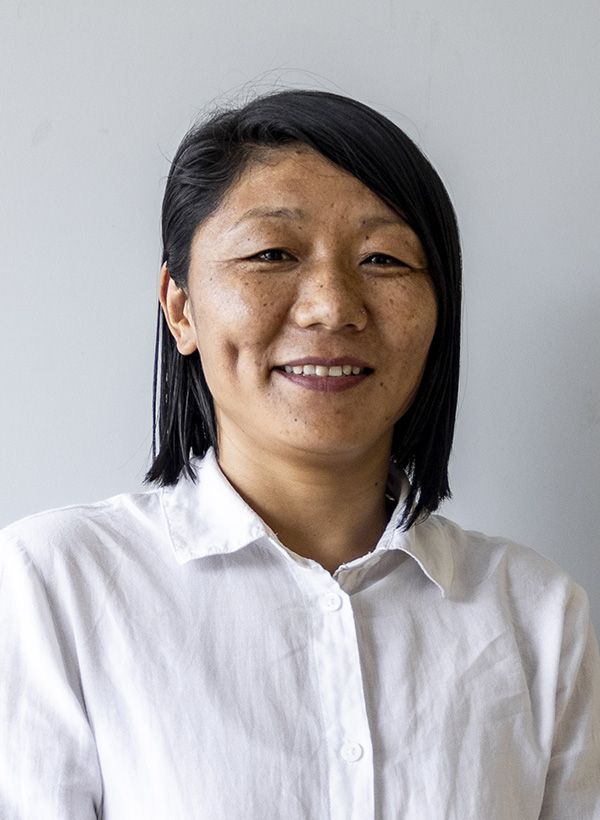
NIRMALA GURUNG 
+977 9801223978
nirmala@thamserku.com
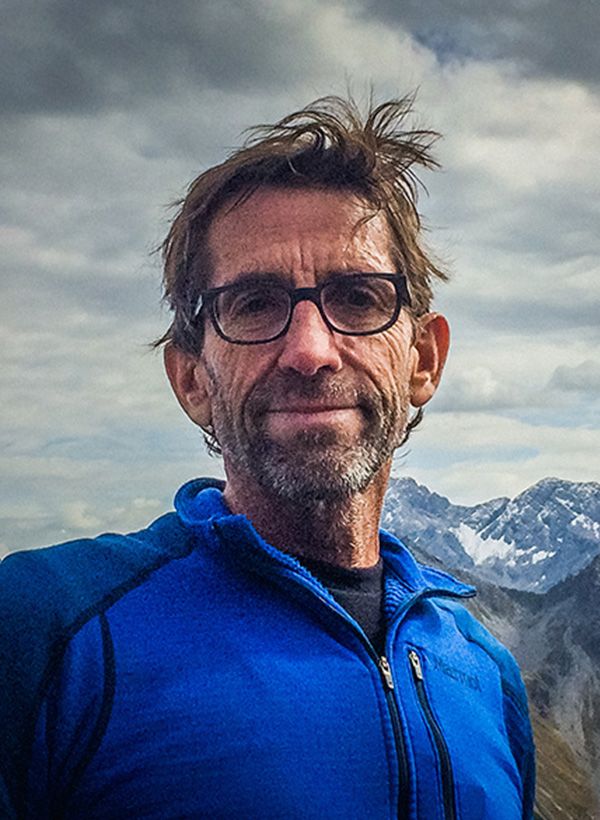
MICHAEL SCHOTT 


+49 174 9755492
m-schott@neumann-grafik.de
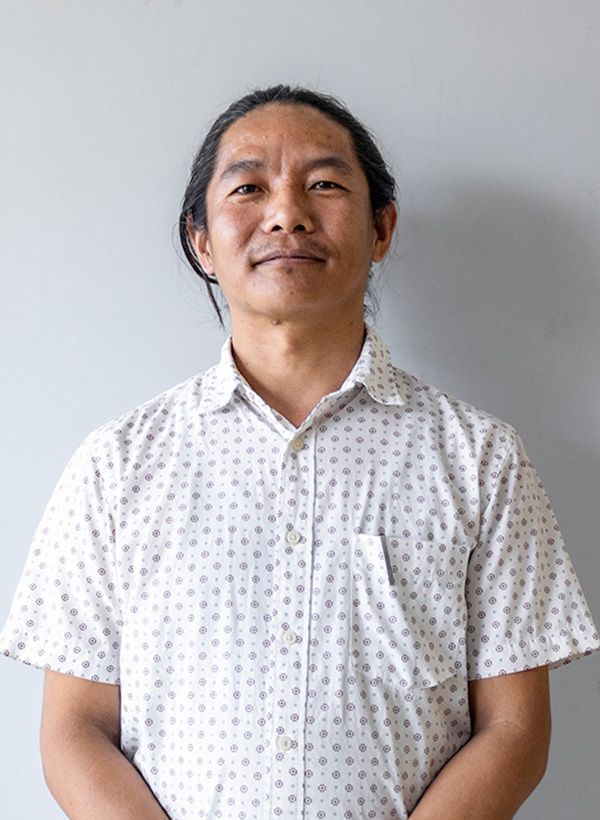
KUMAR RAI 
+977-9801236280
kumar@thamserkutrekking.com
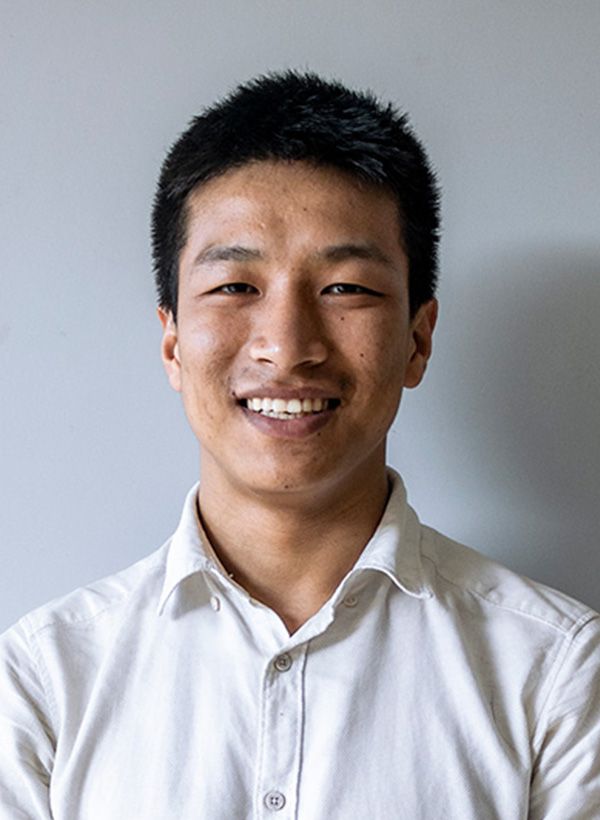
NIMTE SHERPA 
+977-9801223977
info@thamserkutrekking.com
BOOK YOUR TRIP BOOK YOUR TRIP BOOK YOUR TRIP BOOK YOUR TRIP BOOK YOUR TRIP BOOK YOUR TRIP BOOK YOUR TRIP BOOK YOUR TRIP BOOK YOUR TRIP BOOK YOUR TRIP BOOK YOUR TRIP BOOK YOUR TRIP BOOK YOUR TRIP BOOK YOUR TRIP BOOK YOUR TRIP BOOK YOUR TRIP BOOK YOUR TRIP BOOK YOUR TRIP BOOK YOUR TRIP BOOK YOUR TRIP BOOK YOUR TRIP BOOK YOUR TRIP BOOK YOUR TRIP BOOK YOUR TRIP BOOK YOUR TRIP BOOK YOUR TRIP BOOK YOUR TRIP BOOK YOUR TRIP BOOK YOUR TRIP BOOK YOUR TRIP BOOK YOUR TRIP BOOK YOUR TRIP BOOK YOUR TRIP BOOK YOUR TRIP BOOK YOUR TRIP BOOK YOUR TRIP BOOK YOUR TRIP BOOK YOUR TRIP BOOK YOUR TRIP BOOK YOUR TRIP BOOK YOUR TRIP BOOK YOUR TRIP
